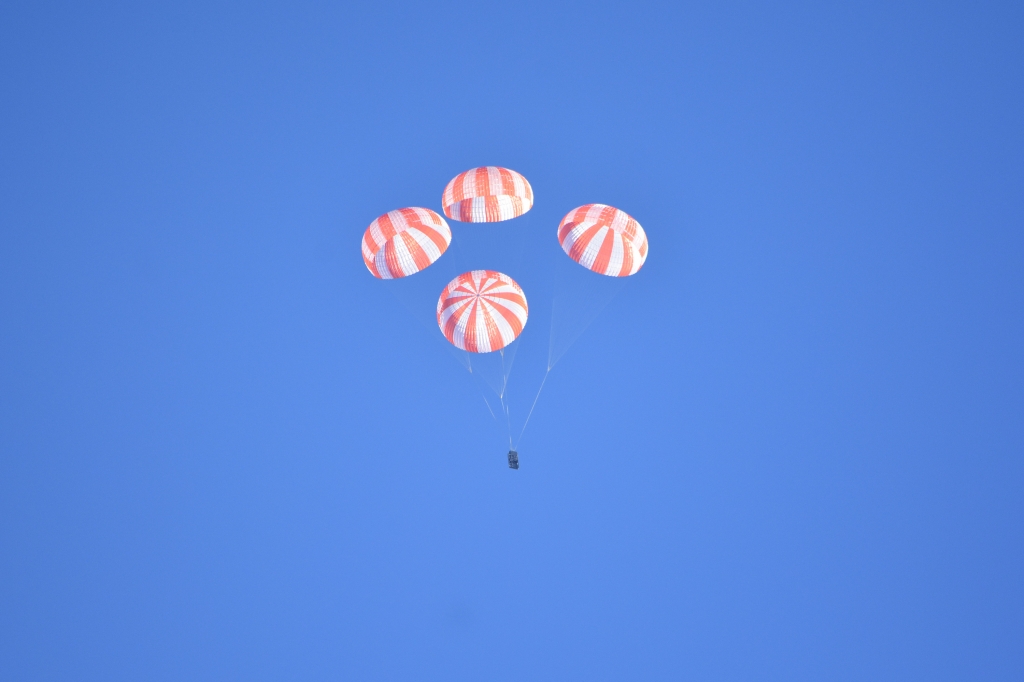SpaceX successfully tests parachutes that will help bring astronauts back to Earth
The parachutes that will be used to slow the descent of SpaceX’s Crew Dragon spacecraft and help return ISS astronauts safely to Earth passed their latest round of testing. The system however lacks the main drogue chutes which a full landing system requires.
No, it wasn’t a UFO, it was just the privately-owned SpaceX trying out four parachute systems in preparation for the landing of its manned Crew Dragon spacecraft. The chutes were carried several thousand feet into the atmosphere by a C-130 cargo aircraft and relinquished to the forces of gravity.
During the test, four parachutes unfurled above the desert near Coolidge, Arizona, and landed carrying a mass simulator, which represented the weight of a spacecraft. The test was made public through a video published by NASA, which showed four large parachutes positioning and lowering a mock spacecraft underneath.
The recent experiment was a part of the collaborative project between Elon Musk’s Space-X and NASA and was dubbed as a “Commercial Crew Program”.
The NASA is collaborating with SpaceX and Boeing to launch commercial flights to space soon.
The design of the Dragon v2 isn’t completely final, and this test was only focused on the effectiveness and reliability of the parachutes.
As per the statement given by NASA, the agency has stated that the later tests will grow gradually more accurate simulate as much of the real conditions and processes the system will encounter during the operational mission.
NASA plans to use SpaceX and Boeing to send astronauts to and from the ISS in the next years. Sending unmanned cargo modules to the station is one thing, but there are a lot of test that need to be completed before any people will be climbing into the Dragon v2 capsule. The company tested its propulsive landing system in Texas this past November. “Once a transportation capability is certified to meet NASA requirements, the agency will fly missions to meet its space station crew rotation and emergency return obligations”.








